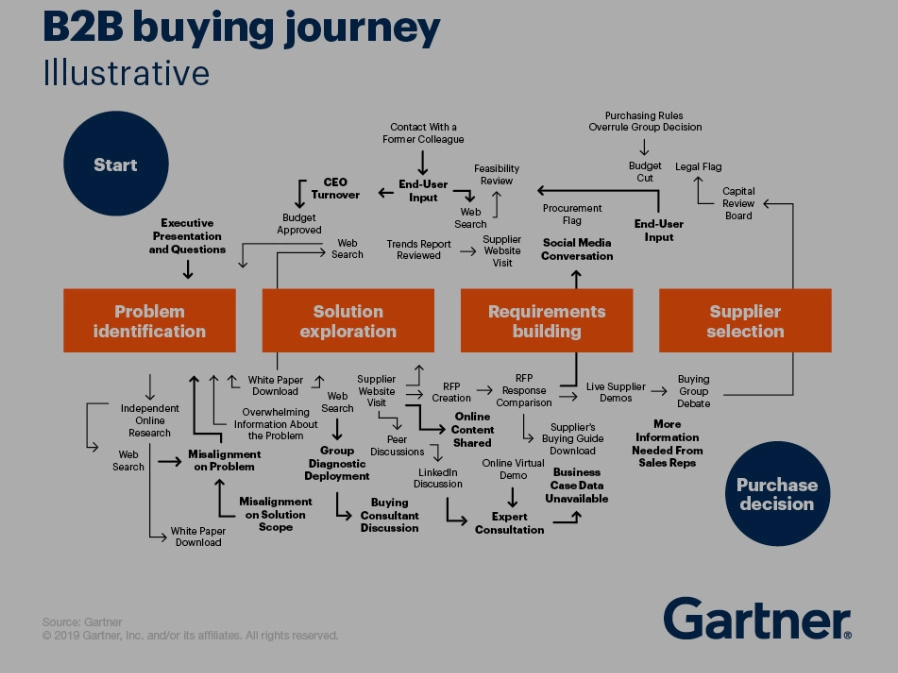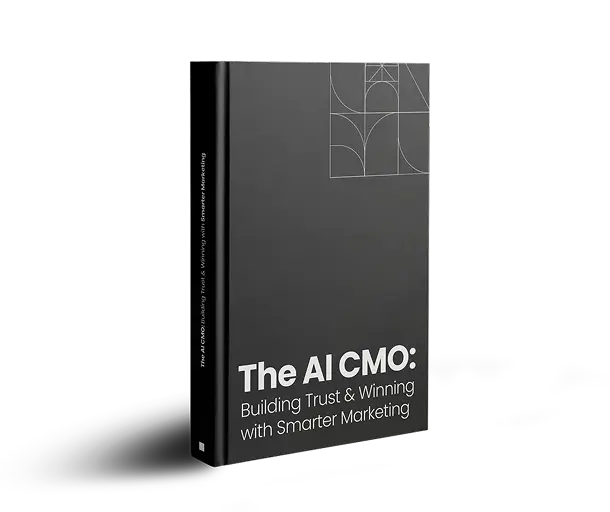
Introduction
If your marketing team is still engaged in spray and pray marketing, consider these remarks from Sarah Mayer, Senior Marketing Ops Manger at MarcomCentral. (Source: 2018 State of Intent Data Report)
“When I started here four and a half years ago, we were doing more spray-and-pray campaigns and treating each campaign the same,” said Sarah Mayer, Senior Marketing Operations Manager at MarcomCentral. “We’ve implemented different workflows and strategies now that were nonexistent four years ago. Our conversion rates are estimated to be up by close to 25%, in comparison to four years ago. Now, we can track deals back to what campaigns they came from.”
What’s did Sarah Meyer and her team do differently? They started running intent driven marketing campaigns.
Intent data points directly at what consumers want. It is behavior data that gives out signals on where prospective customers are in their buying journey. Harnessing intent data allows marketers to personalize their selling approach and messaging. In addition, intent data ensures ad spending is directed at targets with the highest likelihood of making a purchase. Without intent data, b2b marketing is all about guessing, and blindly targeting anyone who makes any sort of interaction with your brand, with generic marketing campaigns and ads that are likely to be ignored.
The Time Factor in Intent Driven Campaigns
Past behavior is an important part of predicting user intent. But historical data alone won’t cut it. A repeat visit to your website for instance, could be a sign of sustained interest. But, if you recommend a product based on this, you could be wrong because it’s likely that the visitor’s needs have changed since they last performed their search. Their pain point could have changed for better or worse, or, they could just be browsing for research purposes. To know for sure, you have to understand the intent behind their actions.
The Role of Intent Data in Today’s B2B Sale Funnel
To understand intent data and the role it plays in lead generation, we must first understand the sales funnel. Traditionally, the buyer journey has always looked something like this:
Today, according to Gartner, the b2b customer journey actually looks more like this:

Figure : The reality of a b2b buyer journey (Source: Gartner)
The fact that the marketing funnel has changed is one of the main reasons why intent data has become so valued in marketing. This more complicated buyer journey highlights the need for information before making a purchase. The buyer journey is no longer linear, thanks in big part, to people’s ability to conduct their research before they reach out to a specific brand. The steps are unpredictable and can vary from one company to the next, and from one decision maker to the next. Given this, it is nigh impossible to market effectively in a linear manner, hence marketing has to adapt to each target’s journey.
For marketers, and especially for top of the funnel efforts, this highlights the need for more aggressive, more targeted content marketing. Analyzing intent data tells marketers where the potential buyer is, what motivates their search and whether they are likely to make a purchase or not.
Types of Intent Data. Which One is Important?
As mentioned, timing is important when working with intent data. The other important parameter is that the data should be individual. Granted, your account is a company, but who you need to target are the individuals who will sign off on the decision.
Therefore, track:
Individual Activity. That is, Unique Website Interaction Data
Is it a first time or repeat visit?
Which page does the visitor view?
Which campaign or channel brought them to the page?
Behavioral Data
Analyzing behavioral data will give you insights into a prospect’s different actions. For instance, page dwell time, could indicate high interest in your offering.
Context
In addition to intent data, you need to know the context of your target. In so doing, you will understand better the nature of their interest. For instance, a search conducted by a VP of sales in a company that is expanding could indicate active interest. A similar search by an executive with the same position in a different company could be conducted out of curiosity or for research purposes.
Context keeps you from misreading or misjudging a person’s online behavior signals for intent to buy.
Surge Data
If there is sudden interest (surge) around a specific topic, this is indicative of level of interest in that topic. This is especially the case if multiple people from your target account keep visiting that topic.
So, How Can You Use Intent Data to Generate Better Leads?
If you are running intent driven campaigns, it means that:
- Your marketing team is driving customers into the funnel and through their buying journey with the right content
- Your sales team are using appropriate messaging and engaging high quality leads at the right time
- You’re after sales team are watching for signs of dissatisfaction to prevent customer attrition. They are also looking for opportunities to upsell or cross sell.
For the purposes of this article, we will look at the first 2 points.
How Intent Data Boosts Your Content Marketing
When you write content, you no doubt do so with the expectation that it will interest your customers. For example, for us, we expect that anyone reading this article is probably interested in intent data. Such a person could be a marketer, or a mid to high level manager. We can also assume that the company they work for is looking for ways to optimize their marketing process and budget.
In addition to other activities and behavior such as other pages they visit and how much time they spend on page, we could create a profile of such a reader and target them with top of the funnel content that is relevant to their search.
Automation would be key to execute such a process with ease. Automating the buyer intent tracking process ensures that when your content is served up through social media and ads, you can track which of those content campaigns led to sales. You can then invest more in those avenues to fully exploit their potential.
A few tips for moving your intent leads closer to buying:
- Optimize your inbound campaign content. Simple acts such as optimizing titles could lead to more reliable intent signals. For instance: “How to prevent “pain point X” using “Y” software for intent data automation”.
- Use lead forms should collect important information to help you build an informative context profile. For instance, job title, industry, pain point, etcetera
- Take an omni-channel approach to promote your content and each time, vary your language in a way that will attract prospects with the most intent to buy.
- Lastly, if your message is best conveyed through a demonstration, invest in video content.
How to Use Buyer Intent Data in Sales
As you collect the signals given off by prospective customers, the question then becomes, “What next? How do you move them on to sales?”
One thing you could do is to develop a system that triggers responses based on signals given. Examples of signals could include: a repeat visit in a given time period, higher account surge data, visiting the pricing page, watching a demo video, among others.
The response triggered could for instance be an offer for a 2-week trial period. Depending on context data (who is performing the search) you could connect them to an account manager who can help advance the conversation.
Your Success with Intent Data Depends on How You Operationalize It
Intent data is arguably a game changer in the marketing landscape. But how you implement it is what will determine how much it benefits your business. Mark Ogne, CEO of ABM Consortium, stresses the need to bring intent data into your workflow in a way that supports your internal Data. Ogne’s intent data onboarding workflow, outlines the following trifecta for intent data operationalization:
- Start with your target accounts. Any intent leads that are not in your target lists should be added, if they fit your profile criteria.
- Find out if you have reliable contacts for key decision makers in the account. If you don’t have contacts, use inbound marketing tactics to get them, or buy the contacts.
- Target your contacts with relevant content, based on intent topics.
Conclusion
It’s worth mentioning that when running campaigns, there is always the risk of putting off your customers. Just because your prospects are giving off intent signals doesn’t mean that they will buy from you. The trick for a marketer is to use intent data to discern the reasons behind a visit and predict needs based on that. If your interpretation of the data isn’t accurate, you could end up alienating prospects by bombarding them with advertising material before they are ready to see it.
Michael Ballard, Sr. Manager of Digital Marketing at Lenovo, insists on the importance of taking your leads through a process he calls “dating”. In an interview with Aseem Badshah, founder and CEO at Socedo, Ballard says that with this method, before he and his team start emailing intent leads that they get through twitter, they nurture them via social media and only engage them through email once buying intention is abundantly clear.
With that, note that even when engagement doesn’t result in a sale, using intent data means responding to a customer’s needs, which consequently forms a positive brand association with them. So, one way or another, you win every time you run intent-driven campaigns.
Our blog
Latest blog posts
Tool and strategies modern teams need to help their companies grow.

Our definition of marketing success in B2B is evolving. For years, traditional metric...

Video has emerged as one of the most effective tools to cut through the noise and con...

The way B2B buyers research, engage, and decide has changed and so must the way marke...







